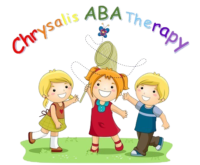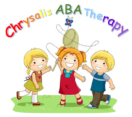The Applied Behavioral Analysis or ABA therapy is a systematic approach for children who have a developmental delay like Autism Spectrum Disorder (ASD), mental challenges such as Global Developmental Delay (GDD), Down syndrome or those kids who have speech delays and other conditions. The goal of the ABA is to at least control or decrease the child’s maladaptive behavior such as self-injurious acts, belligerence and other behavior that causes injury to themselves and other people. Moreover, the process itself is composed of a systematic approach that aims to improve the child’s communication and socialization. However, many parents are still hesitant to even ask about what is ABA therapy and if they need it for their children.
Understanding ABA therapy in a deeper level
The behavior analysis was initially used to children with ASD and other related conditions in 1960’s. Most of the techniques that were utilized are instruction based which involves the therapist directing the child in every activity. From there, various techniques were developed and improved to help children adapt useful skills that assist them to communicate and socialize with the people around them. Today, ABA is not contained for children who have autism, but to every child who needs assistance to improve their communication and socialization skills. In addition to this, therapists who used ABA approach collaborates with the parents, and they assess the child’s preparedness to do collaborative activities wherein they let the child takes the lead.
Through the years, ABA therapy is one of the tools that efficiently produce a positive behavior towards the child’s communication, socialization, self-care, play and other activities. The treatment applies to individuals from toddler stage to adult life who have ASD, other related developmental delays, and mentally challenged kids.
Methods used in ABA Therapy
- Initially, the therapist needs to ask series of questions to the parents or family member about the child’s interaction at home. In this stage, the therapist will ask how the child behaves at home or when going out.
- Once gathering of necessary information is completed, the therapist will need to create a plan of action to decrease maladaptive behavior and focus on the child’s weakness to improve it. Since most children who receive Behavioral therapy are having difficulties in socializing, most of the goal of the therapists is to enhance the child’s social behaviors.
- For children who have disabilities, the focus is to teach them behaviors that are attainable in a small period.
- The therapist utilized as well the so called “Cueing the Response” which involves showing off pictures or objects or giving instructions to the kid. The activity allows the child to respond which helps the therapist to assess how the child behaves.
- Another approach used by therapists is to target the child’s reaction to getting three responses (correct, incorrect and no response) and provide proper consequences. For a child who has a proper response, the therapist will boost it by praising the child. However, for children who respond incorrectly or no response at all, the therapist need to correct the behavior by prompting.
Acquiring ABA therapy is a challenge to the entire family because it is time-consuming and some people may not afford the cost of the treatment. On the other hand, some organizations are trying to assists the family who struggled to continue the therapy. Many organizations are now fighting to include the behavioral therapy in medical insurances in the USA. On a positive note, there is various groups produce a toolkit that educates the family about the behavioral therapy which can be done at home.


